OVERVIEW:
Working within a multi-disciplinary, collaborative team, we leveraged scenario planning methodologies for organizational change management for a large, multi-national toy company. The final outcome included the development of a strategic planning toolkit and the design of four scenarios that outlined potential actions and directions for the company.
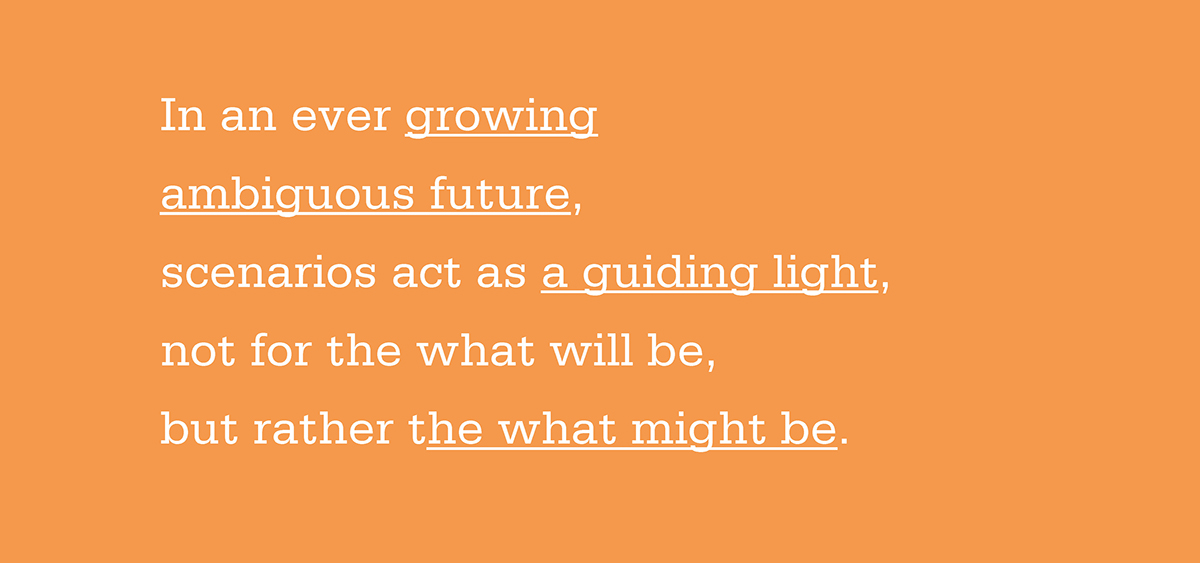
SCENARIO PLANNING:
Scenario planning is a strategic planning method that organizations use to make flexible long-term plans. Planning for the future allows an organization, small or large, to understand how to deal with potential changes and/or crisis that the come their way. However, since planning for the future is never a linear path, organizations can interpret patterns of driving forces and embrace unpredictabilities to help uncover where and what the certainties are in regards to an organization’s future.
A brief explanation of the value of scenario planning
RESEARCH:
To shape the future with scenario planning, the scenario team started by researching trends relating to Politics, Economy, Social, Education, Health, Culture, Environment, and Technology. We also read books ranging from scenario planning to science fiction, to generational theory. The research and trend analysis gave a basis for how to move forward in the scenario planning process.
Examples of the books and reference material researched by the team
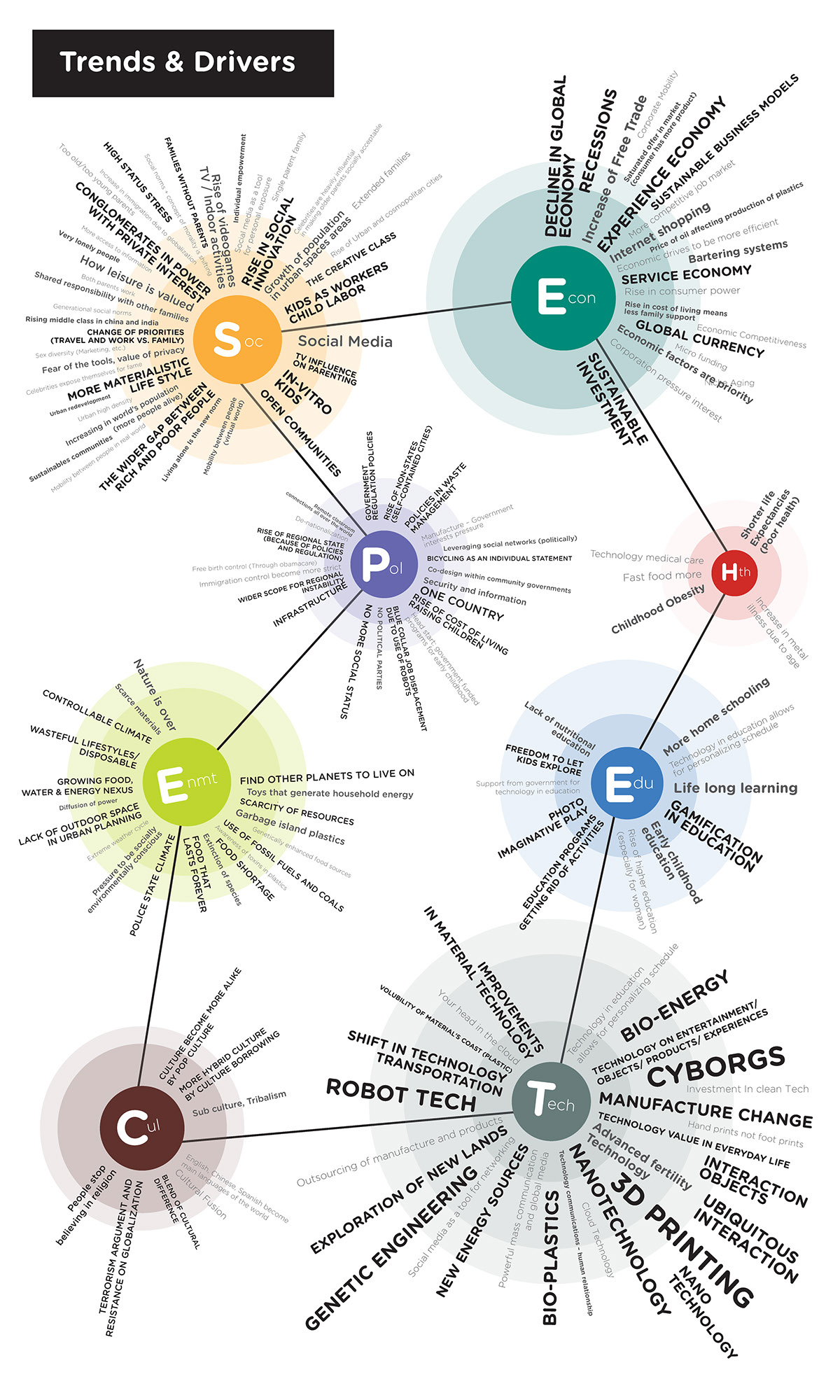
TRENDS MATRIX:
The trends were plotted on a 3x3 matrix and prioritized by their degree of uncertainty and impact to the client. The trends with higher degrees of uncertainty and impact were of the most interest.
Deliberating the placement of the trends on the matrix
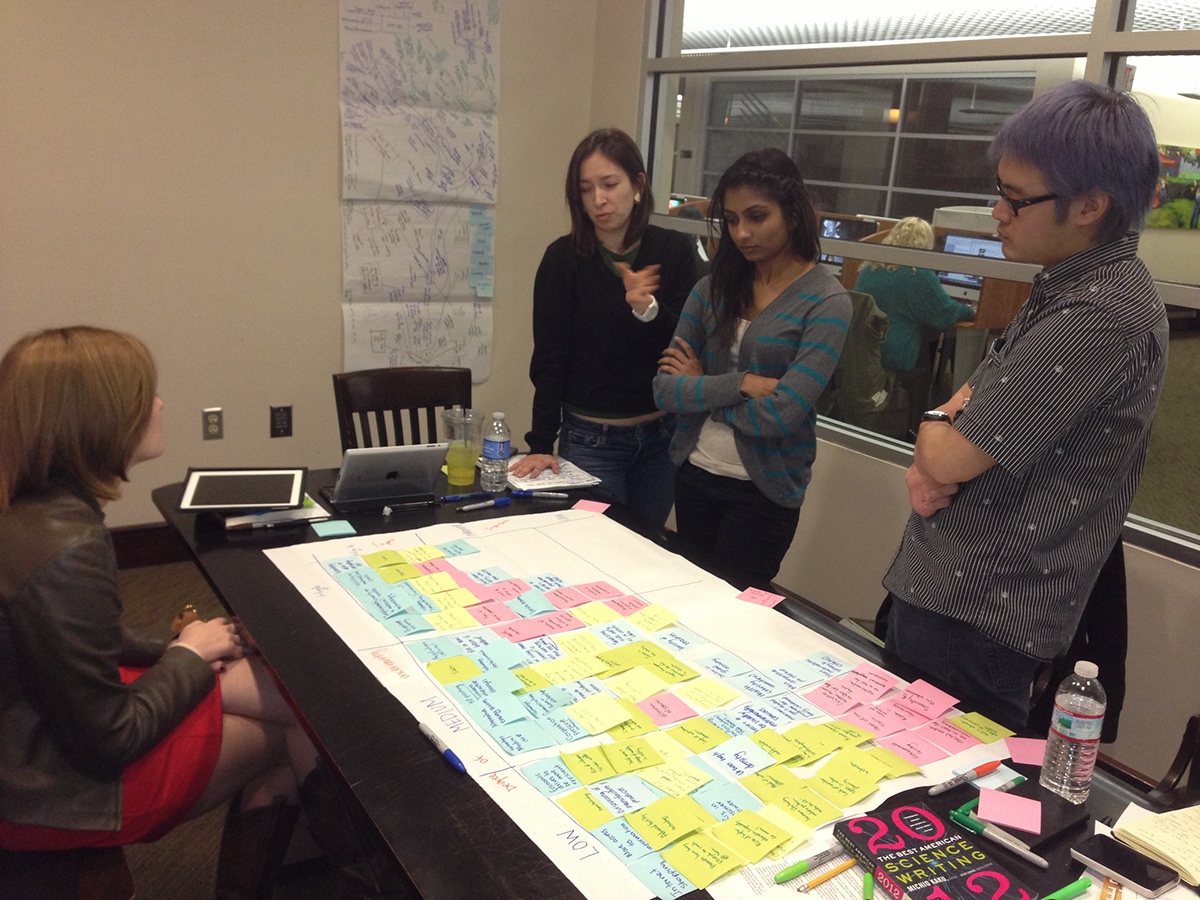
SNIPPET SCENARIOS:
Next, two trends selected to create snippet scenarios. While developing these snippet scenarios, the team kept both Generational Theory and relevance to the client in mind. Through a variety of methods (including axis, timeline, and diagramming) 20 diverse snippet scenarios were created and a key theme in each scenario was identified.
Working in small groups to create small snippet scenarios
SNIPPET SCENARIO EXAMPLE:
Below is an example of a trend that created two snippet scenarios: one positive and one negative.
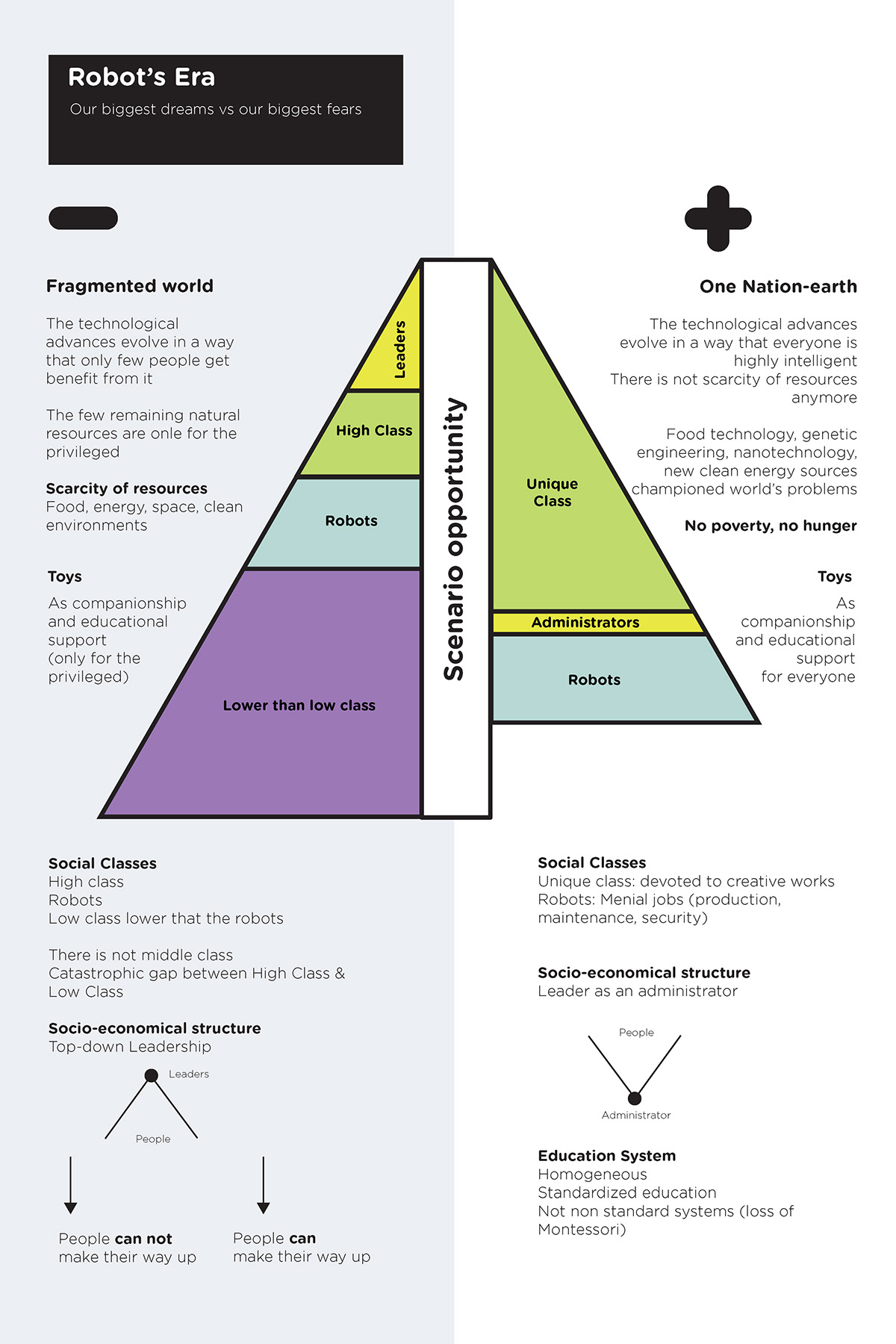
WORKSHOP WITH CLIENT:
The team also conducted a short workshop with the client to teach them the scenario planning process and gain their insights on what trends were of most importance to the client.
DEVELOPING ERAS:
The team realized that many of the snippets were unique to a specific time period. To identify the time period of each scenario , the themes were plotted on a timeline identifying each theme as either close future, medium future, or far future. This allowed the team to see the connections and patterns that link story together. A series of eras were names and differentiated by both time period and evolving characteristics that unfold into later eras.

2 DELIVERABLES:
1. Rain or Shine Toolkit: a collaborative tooling to forecasting and scenario planning.
This guidebook describes the in-depth process the team went through to create scenarios. It also gives reference material, instructions, and workshop templates to guide an organization to create scenarios relevant for their industry. It is framework for organizations and teams learn, develop, and generate scenarios.
1. Rain or Shine Toolkit: a collaborative tooling to forecasting and scenario planning.
This guidebook describes the in-depth process the team went through to create scenarios. It also gives reference material, instructions, and workshop templates to guide an organization to create scenarios relevant for their industry. It is framework for organizations and teams learn, develop, and generate scenarios.
To read more, please click here: http://issuu.com/bhavikashah/docs/toolkit_6x9_spreads
2. Four Scenarios: forecasting scenarios that speculated how the world could be 80 years from today.
Each scenario included a context scenario which stated the general state of the world, a timeline of major events, context era mini-stories that related to the client, and a list of actions the client should take now to help the prepare for the future.
Each scenario included a context scenario which stated the general state of the world, a timeline of major events, context era mini-stories that related to the client, and a list of actions the client should take now to help the prepare for the future.
RAIN OR SHINE TOOLKIT
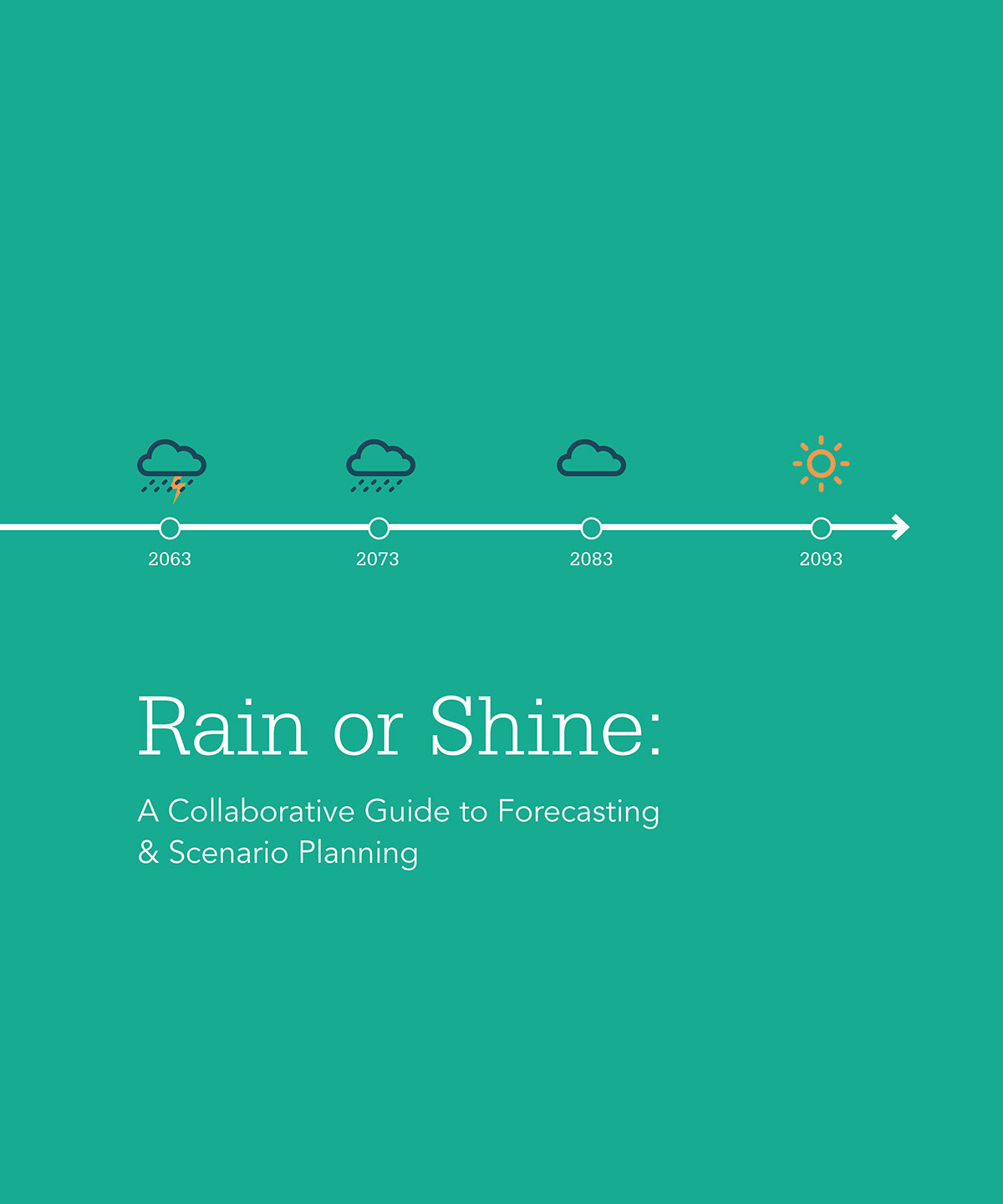
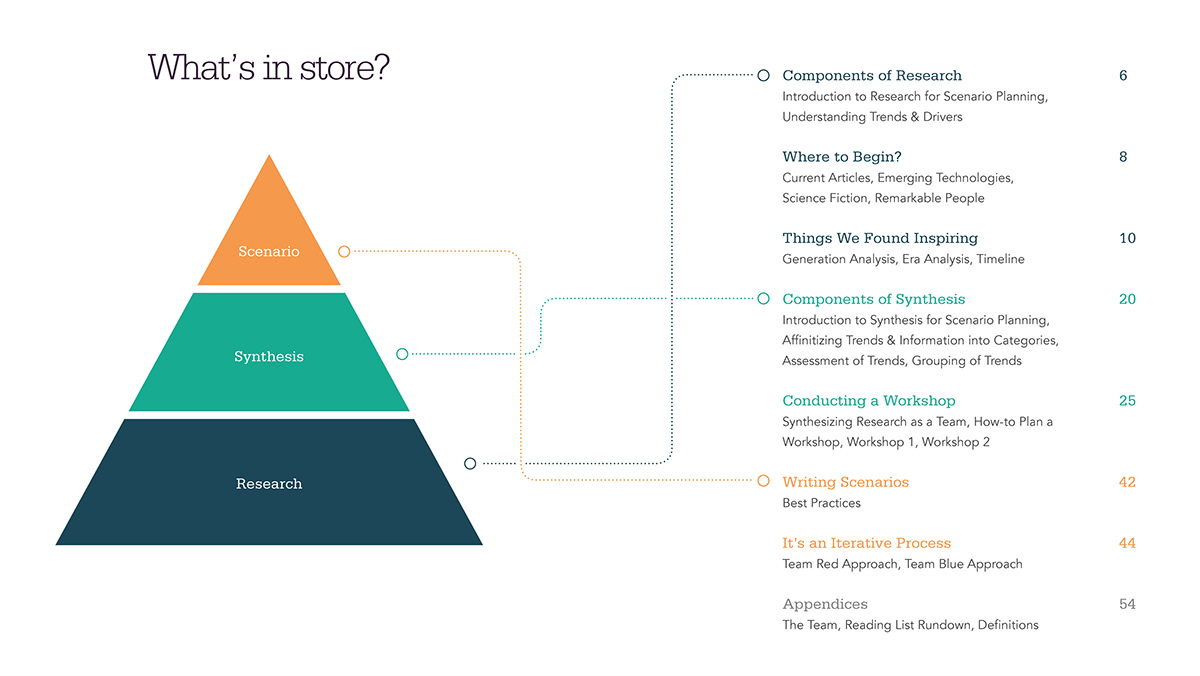
THE SCENARIOS
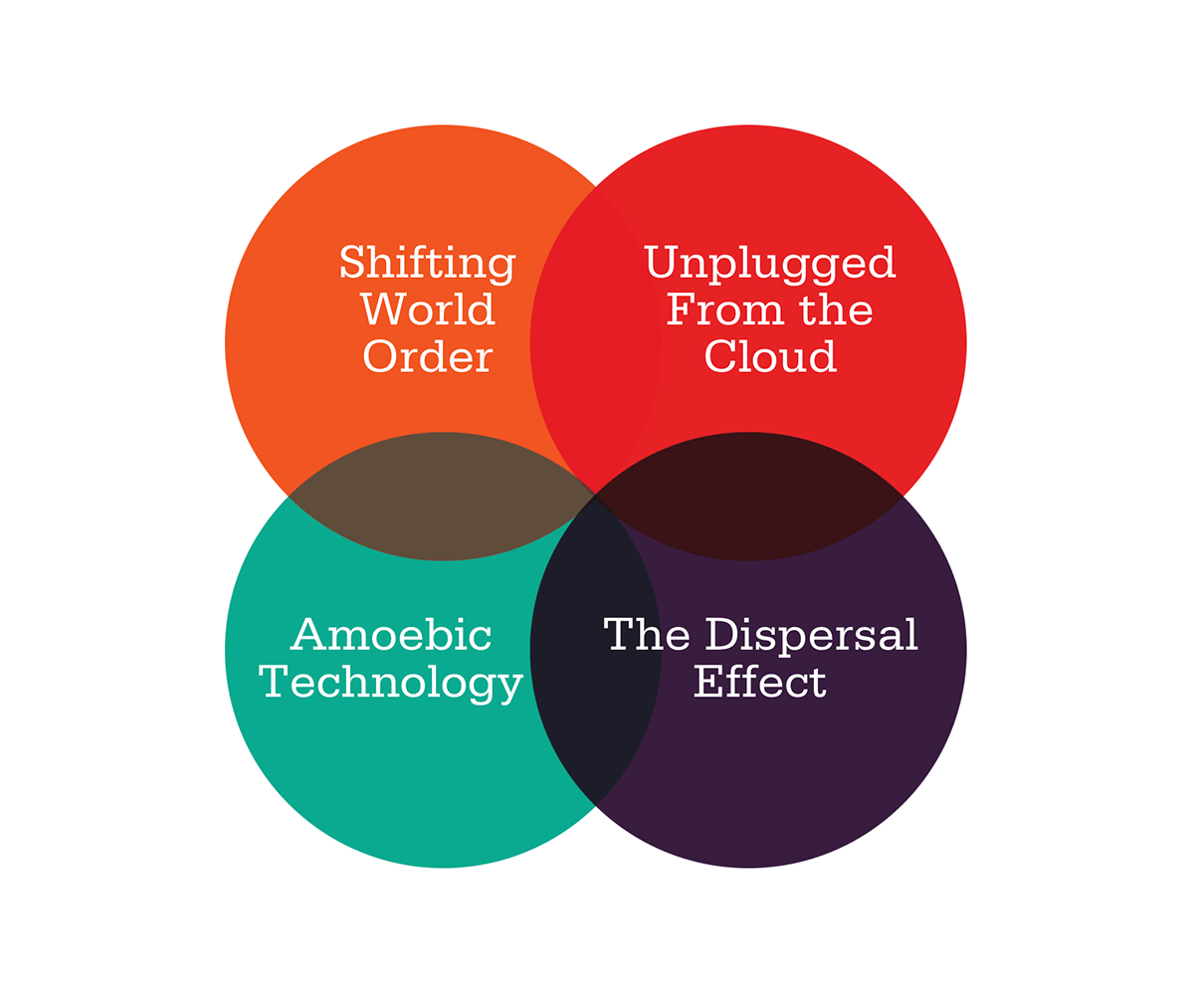
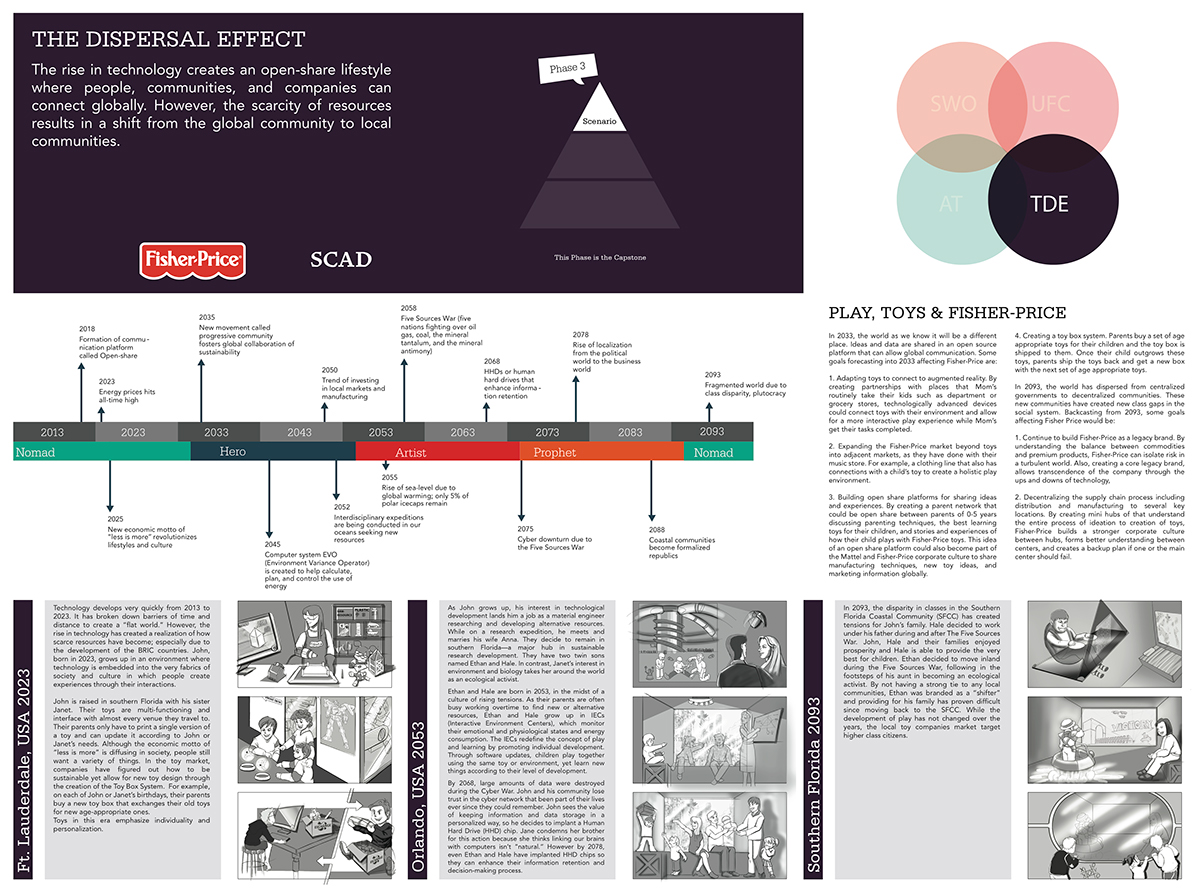
Example of one of the four scenarios. Not included in this graphic are the context era mini-stories
THE TEAM:
Bob Fee (professor), Bhavika Shah, Priscila Mendoza, Mariana Ortiz-Reyes, Oak Borriraklert, Jonas Xu, Lindsay Vetell, Caleb Sexton, Nicholas Schroeder, Rick Ekelman, Carol Lora, Moriah Lutz-tveite, Kelvin Patterson, Azadeh Seyed Abrishami
MY CONTRIBUTIONS:
Design/project manager and co-team leader; workshop facilitator with client and representatives from SCAD; writer of 2 of the 4 scenarios including context scenario, day-in-the-life, and relevance to the client; researcher of generational theory, science fiction, and technology and education trends; voice-over for videos.
VALUE FOR CLIENT:
The client was very happy with the final deliverables and wanted to distribute them throughout the company. Therefore, they flew 4 students (myself included) to their corporate office in New York. There we explained the process and final deliverables to an audience of over 150 people and participated in an all-day brainstorming workshop with the client's research and development team. The project was so successful that the client has put into production products that came from the ideas given and they will be going to market over the next 5 years.
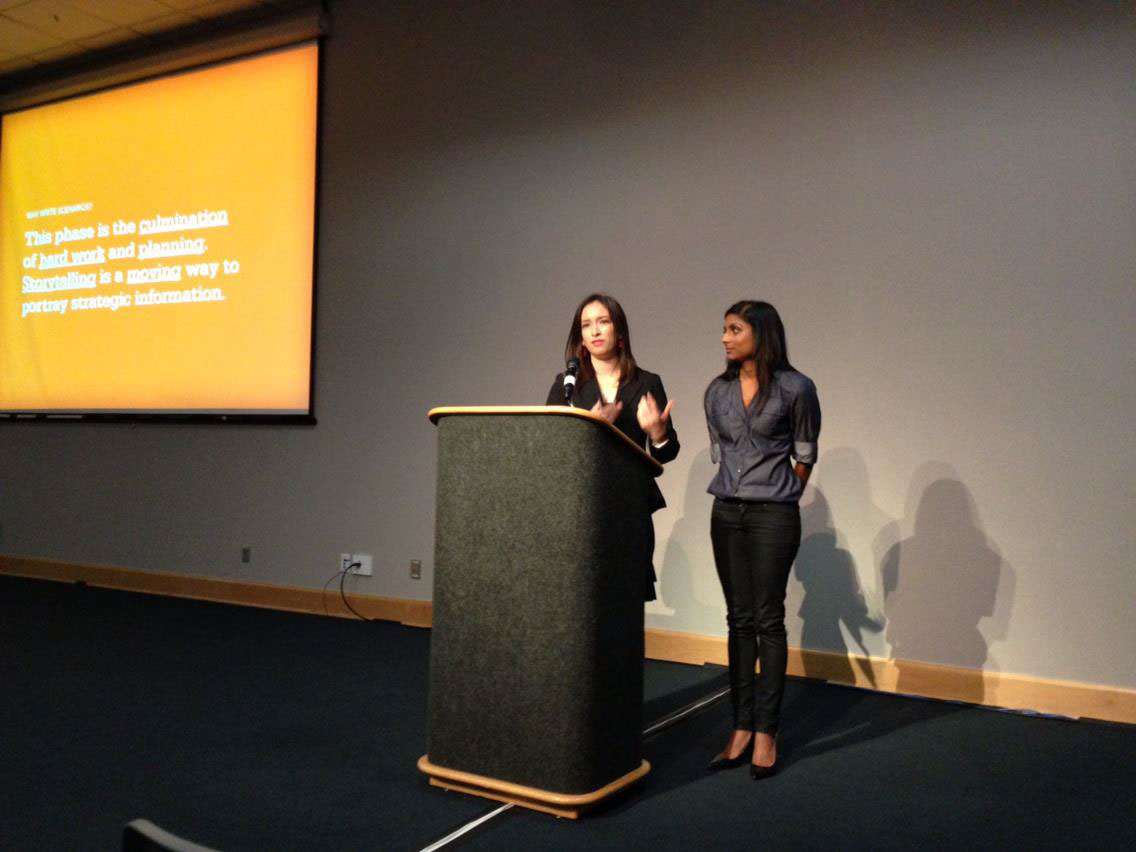
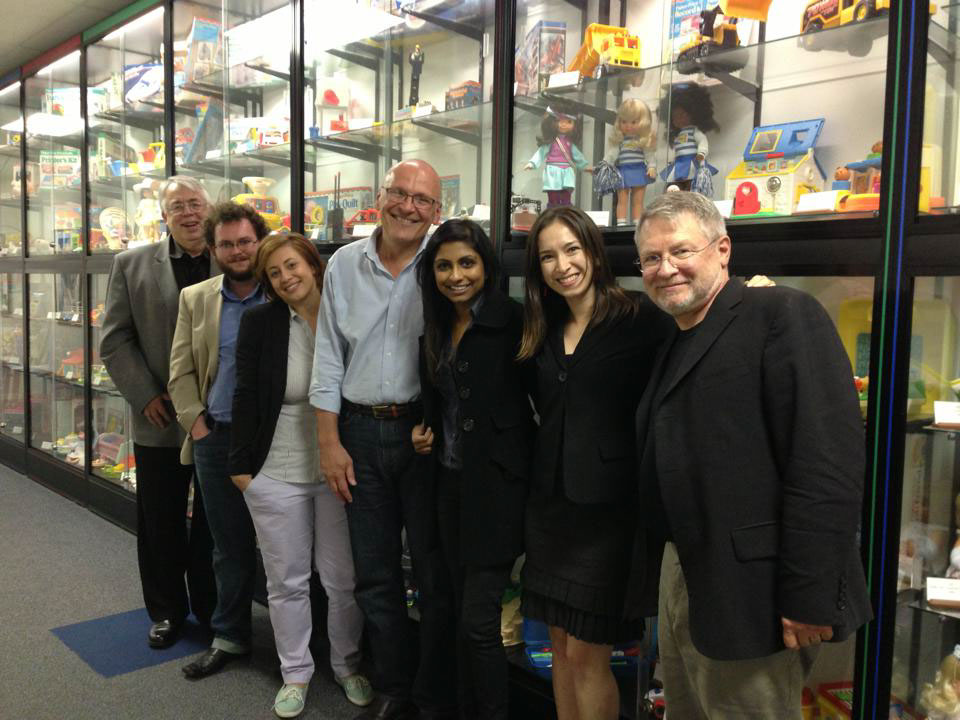
Representatives of the team that traveled to the client's home office to present the work


